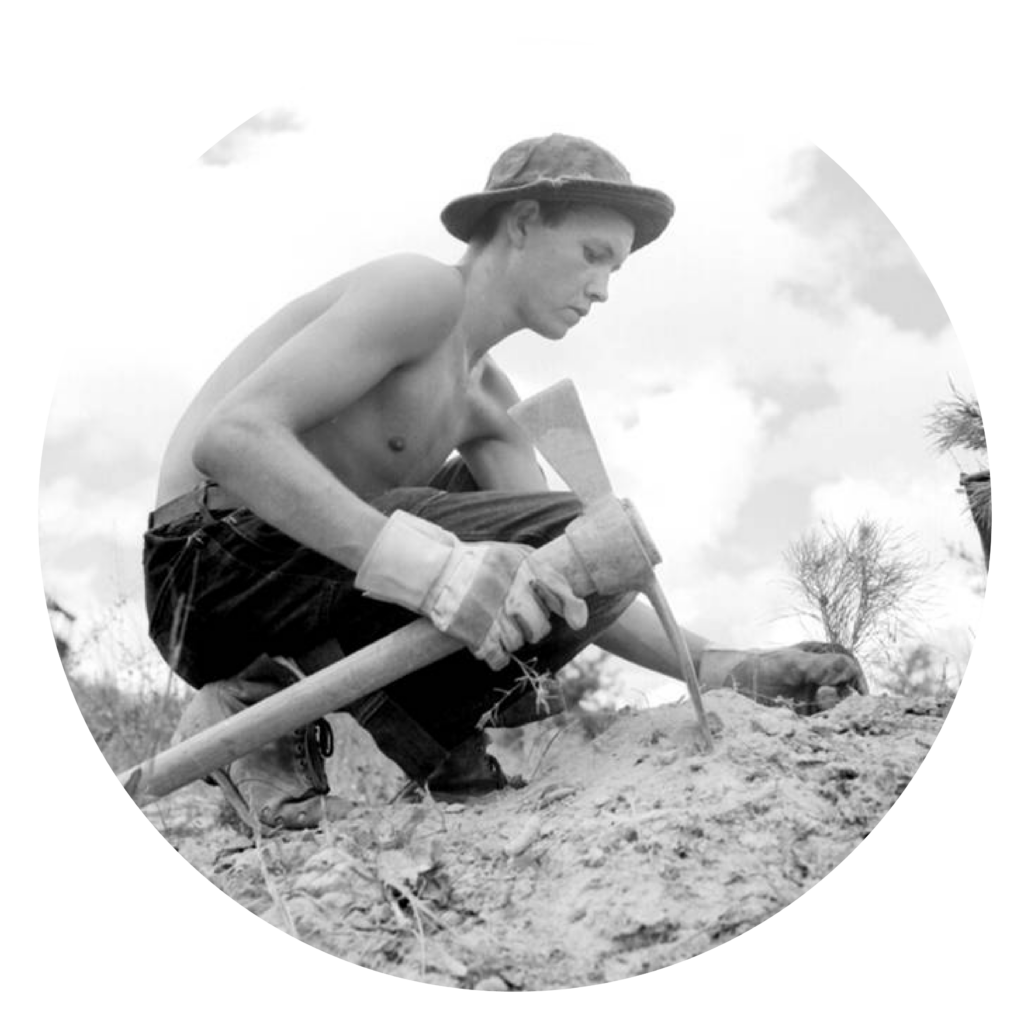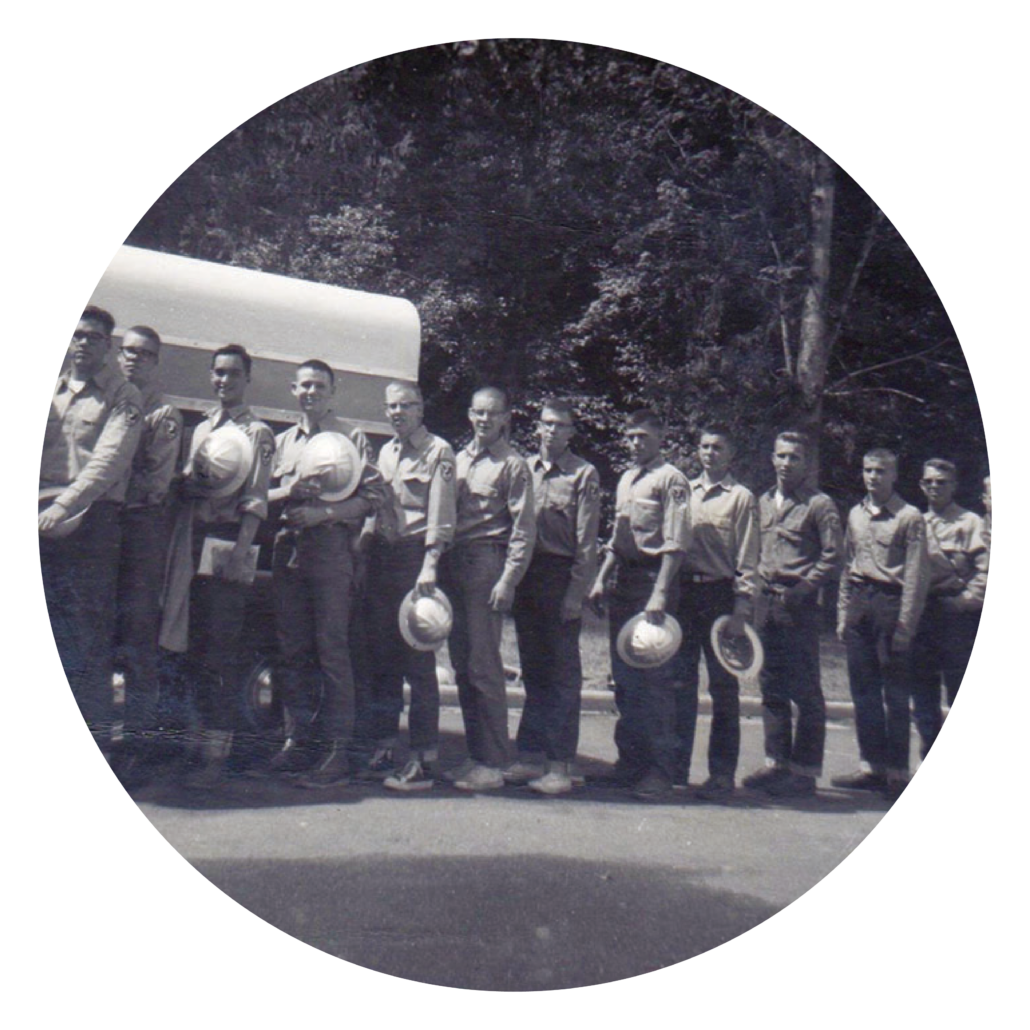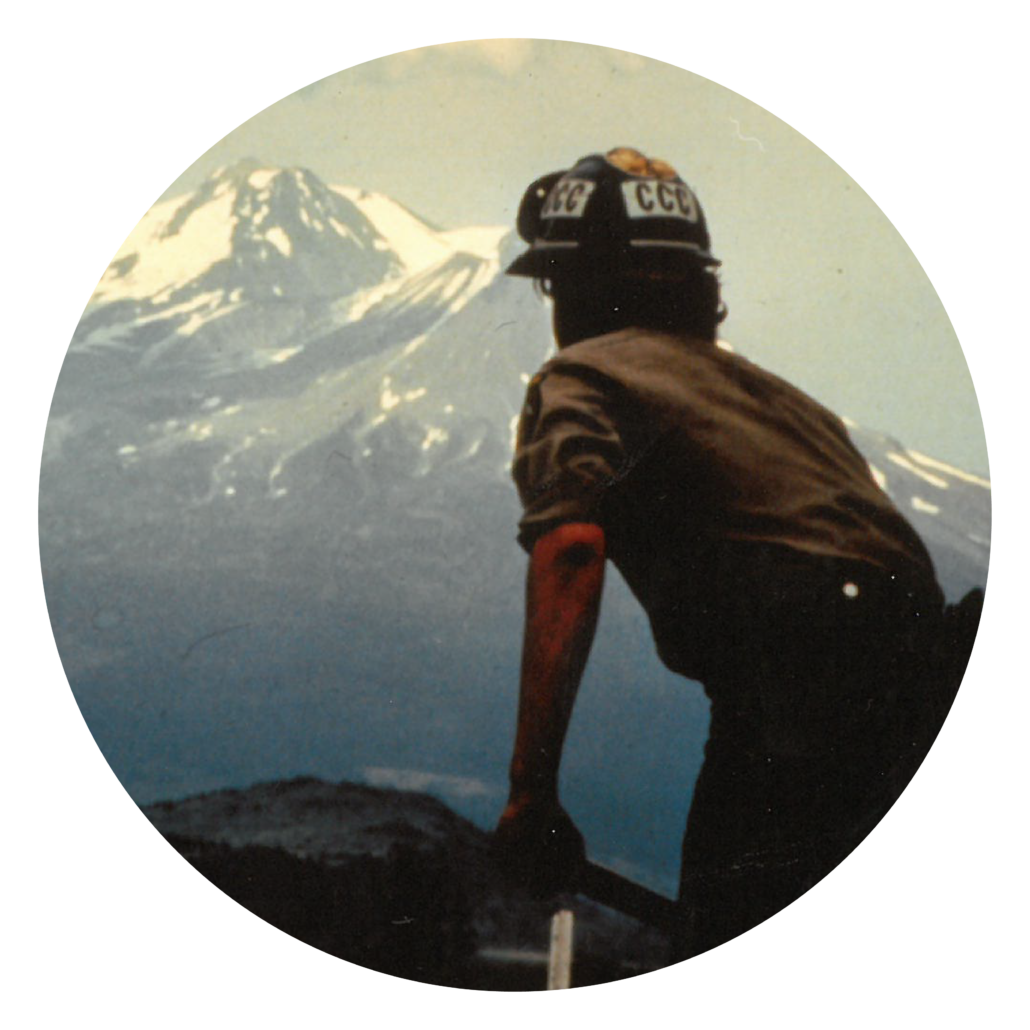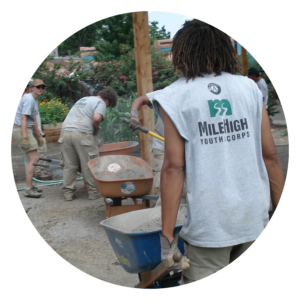1930s – 1940s
The Civilian Conservation Corps
At the peak of the Great Depression, President Franklin D. Roosevelt created the Civilian Conservation Corps (CCC): a federal work relief program that, from 1933 until 1942, put 3 million unemployed young men to work building and restoring America’s natural resource infrastructure. Participants received $1 per day, regular meals, housing, and access to education. The CCC members drastically improved America’s public lands, planting billions of trees, constructing campsites, building thousands of miles of trails and roads, and undertaking other endeavors to develop our park systems. While the CCC disbanded in 1942 when the U.S. entered World War II, the concept lived on. The CCC was one of the most popular New Deal programs.
It is important to state that the CCC was created during the era of Jim Crow. Black CCC members often served in segregated camps, completed less desirable projects, and did not have the same opportunities for advancement as their white peers. Native American men served in a parallel program to the CCC – the CCC Indian Division – which primarily focused on projects on Tribal lands. The Corps Network is committed to advancing opportunities for marginalized communities in the Corps community.

1950s – 1970s
SCA, YCC, YACC
The model of the CCC was revived in 1957 when the Student Conservation Association (SCA) placed its first college students as volunteers in national parks and forests.
Just over a decade later, the SCA model was used as the basis for legislation that created the Youth Conservation Corps (YCC). At its height during the mid-1970s, the YCC enrolled some 32,000 young people each summer in programs operated by the Departments of Interior and Agriculture, as well as by states.
Late in the 1970s, an even larger federal program was launched, the Young Adult Conservation Corps (YACC), which provided young people with year-round conservation-related employment and education opportunities.

1970s – 1980s
State and Local Conservation Corps
State Conservation Corps
Both the YCC and the YACC were virtually eliminated in 1981 due to federal budget reductions. By that time, however, the value of Corps had been proven and many states had begun to support these programs directly. California became the first when Governor Jerry Brown launched the California Conservation Corps in 1976. By the first half of the 1980s, state-operated Corps could be found in Iowa, Maryland, Minnesota, New Jersey, Ohio, Pennsylvania, Vermont, Washington and Wisconsin.

The Growth of Local and Urban Corps
1983 saw the first Urban Conservation Corps with the establishment of several nonprofit programs in California cities. In the mid-‘80s, New York City established the City Volunteer Corps and added a new dimension to the Corps model: engaging young people in the delivery of human services as well as conservation work. Throughout the 1980s, despite the absence of federal support, new state and local Corps continued to spring up across the country.

1990s
Federal National and Community Service Funds for Corps
In the early 1990s, the Corps movement saw the first targeted federal funding in more than a decade when the Commission on National and Community Service awarded approximately $22.5 million in grants. These funds were made available under the American Conservation and Youth Service Corps Act of 1990. While only half of the established Corps benefited directly from these funds, the number of Corps programs almost doubled, to just over 100.
In 1993, President Clinton signed The National and Community Service Trust Act, which amended the 1990 legislation to provide federal support to many kinds of community service programs besides the traditional Youth Corps. The new law also established post-service educational benefits for participants through the AmeriCorps Program. During the first full year of AmeriCorps, beginning in September 1994, 53 Corps received AmeriCorps grants. To this day, Corps annually engage tens of thousands of AmeriCorps members.

2000s
The 21CSC
In 2010, the White House launched the “America’s Great Outdoors Initiative” to develop a 21st century conservation and recreation agenda for the country. Based on listening sessions and public comments, a report was compiled, including the recommendation to “catalyze the establishment of a 21st Century Conservation Service Corps (21CSC) to engage young Americans in public lands and water restoration.”
The 21CSC was a national initiative to increase the capacity of the Corps movement through expanded public-private partnerships. The bipartisan 21CSC Act was introduced in the U.S. Senate (S.1403) and House of Representatives (H.R. 2987) in June 2017. It passed as the John S. McCain III 21st Century Conservation Service Corps Act in March 2019 as part of the John D. Dingell, Jr. Conservation, Management, and Recreation Act (S. 47). Among other provisions, the bill expanded the Public Lands Corps authority to the National Oceanic and Atmospheric Administration (NOAA), established an Indian Youth Service Corps initiative, and called to improve coordination between Corps and agencies under the Public Lands Corps Authority.

Today
Corps Addressing Pressing Challenges
Today, the nation’s Service and Conservation Corps operate in multiple communities across all states, the District of Columbia, and U.S. Territories. To address America’s changing needs, Corps continue to expand into new project areas, like energy use, disaster response and mitigation, coastal restoration, and infrastructure development.
(Banner Photo by National Archives)





































































